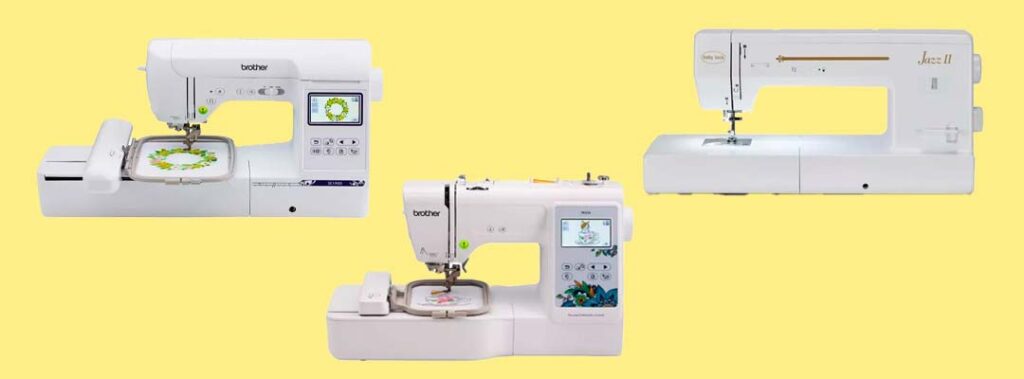
Embroidery is a timeless craft that allows you to transform ordinary fabrics into personalized works of art. Whether you’re just starting your embroidery journey or have been stitching for a while, one critical aspect of running a successful embroidery business or hobby is pricing your work appropriately.
How do you calculate embroidery work to make a profit for your business? In this beginner’s guide, we’ll walk you through the essential steps to help you confidently determine the right prices for your embroidery projects.
Why Pricing Matters
Before delving into the nitty-gritty of pricing embroidery work, it’s crucial to understand why getting it right is so important. Accurate pricing ensures that you cover your costs, make a profit, and maintain a sustainable embroidery venture. Additionally, fair and transparent pricing builds trust with your customers, leading to repeat business and positive referrals.
Simple Pricing Formula for Crafters

Crafting is often categorized as ‘skilled labor,’ and many professional crafters calculate their labor costs using an hourly rate ranging from $16 to $20.
- Cost of supplies + $15 per hour time spent = Price A
- Cost of supplies x 3 = Price B
- Price A + Price B divided by 2* = Price C
* Average between Price A and Price B
Understanding Your Costs
Why is embroidery so expensive? Many customers frequently ask this common question when seeking a quote for embroidery work. As a business owner, it’s crucial to comprehend the costs associated with producing a product and ensuring profitability.
1. Material Costs

Embroidery work involves various materials, and it’s essential to account for each one when determining your prices:
- Fabrics: The type and quality of fabric you use significantly impact your project’s cost. Keep track of the cost per yard or meter.
- Threads: Different thread types and colors have varying costs. Calculate the number of threads used in each project and their individual prices.
- Stabilizers: Stabilizers are essential for preventing fabric distortion during embroidery. Consider the cost per sheet or roll of stabilizer.
2. Equipment and Maintenance Costs

- Embroidery Machine: If you own an embroidery machine, include its cost, financing, or lease payments in your pricing calculations. For maintenance, budget for regular servicing and any unexpected repairs.
- Labor Costs: Don’t forget to factor in the time you spend on each project, as well as any wages you pay to employees if you have a team.
3. Researching the Local Embroidery Market
Before setting your prices, it’s essential to understand your local market:
- Competitor Analysis: Research other embroidery businesses in your area to get a sense of their pricing structures. Identify what makes your embroidery services unique.
- Market Demand: Determine if there’s sufficient demand for embroidery services in your area. This information can guide your pricing decisions.
4. Setting Competitive Yet Profitable Pricing
While you want to remain competitive, ensure your prices are profitable:
- Cost Comparison: Compare your production costs to competitors’ prices to ensure you’re not underpricing your work.
- Value-Added Services: If you offer additional services like design consultations or quick turnaround times, consider incorporating these into your pricing to justify higher rates.
Calculating Overhead and Profit Margins
Determining Monthly Overhead Expenses
To maintain a profitable embroidery business, you need to cover your monthly overhead expenses:
- Rent: If you have a dedicated workspace, include rent or mortgage payments in your calculations.
- Utilities: Account for electricity, water, and other utility bills related to your embroidery workspace.
- Insurance: Factor in insurance costs, including liability insurance if you offer commercial embroidery services.
- Marketing: Include expenses for advertising, website maintenance, and promotional materials.
Setting a Profit Margin Goal
- Profit Goals: Decide on the profit margin you want to achieve. A common target is a 20-30% profit margin.
- Income Target: Calculate your desired annual income from your embroidery business. This helps you determine how much profit you need to make.
Pricing Methods
Cost-plus pricing involves adding a markup percentage to your costs:
- Markup Percentage: Decide on a consistent markup percentage that covers your costs and desired profit margin.
Value-Based Pricing
- Perceived Value: Price your embroidery work based on the perceived value it offers to your customers. High-quality materials and unique designs can justify higher prices.
Factoring in Design Complexity
Pricing Scale Based on Design Complexity
- Simple Designs: Charge less for basic, straightforward designs that require minimal time and materials.
- Moderate Complexity: Assign a higher price for designs with more intricate patterns, requiring extra attention and materials.
- Special Techniques or Customizations: If a project involves unique techniques or customizations, adjust your pricing accordingly to reflect the added complexity.
Strategies for Handling Price Haggling
- Know Your Limits: Be prepared to negotiate but have a clear bottom line to ensure you don’t underprice your work.
- Value Proposition: Emphasize the value of your embroidery services and the quality of your work during negotiations.
- Professionalism: Maintain professionalism and politeness throughout negotiations to build a positive reputation.
Regularly Reviewing Your Pricing Strategy
- Frequency: Periodically review your pricing strategy to ensure it remains competitive and profitable.
- Market Changes: Keep an eye on market trends and adjust your prices accordingly.
- Rising Costs: If your material or operational costs increase, consider adjusting your prices to maintain profitability.
- Competitive Landscape: If competitors change their pricing structures, assess whether your prices need adjustment to remain competitive.
Pricing embroidery work correctly is essential for the success of your embroidery business or hobby. By understanding your costs, conducting market research, and using effective pricing methods, you can confidently set prices that cover your expenses, provide a profit, and satisfy your customers. Remember that transparency and communication are key to building trust and long-lasting customer relationships in the world of embroidery pricing. As you gain experience, continue to monitor and adjust your pricing strategy to ensure your embroidery venture remains both enjoyable and profitable.
Are you searching for unique and personalized baby clothes? Allow us to craft a custom-printed baby onesie featuring your child’s name or initials. Begin your customization journey today by visiting our Wholesale Custom Printed Baby Clothes page.

